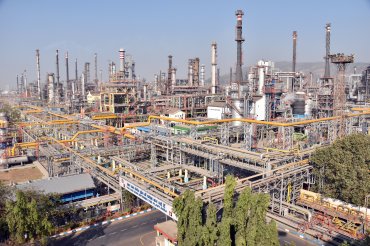Another India Base Oil Refiner to Upgrade
Bharat Petroleum Corp. Ltd. has contracted Chevron Lummus Global to provide technology that will be used to add API Group II or III capacity to its base oil plant in Mumbai.
BPCL so far has not disclosed the grades of base stocks involved nor the capacity, but it is the second Group II/III project to be announced in India in the past three months. Observers said this reflects that the market has begun shifting toward more highly refined base stocks and that domestic suppliers want to cash in on the trend.
In a statement last month, CLG said it received a contract from BPCL for the license and design of its hydrocracker and lubricant oil base stock unit to enhance the capacity. BPCL’s plant in Mumbai will use CLG proprietary hydrocracking, wax isomerization and hydrofinishing technologies for the production of high quality clean fuels, premium grades of lubricating base oils and white oils, it added.
BPCL’s plant currently has capacity to make 180,000 metric tons per year of Group II base stocks. The company did not respond by press time to questions about whether the project is an expansion or upgrade, the amount of capacity that will be added and whether the additional base oil capacity will be for Group II or Group III.
India is the world’s third-largest finished lubricant market, but it has a large deficit of base oil capacity and therefore is one of the world’s largest net importers of base oil. Sudip Shyam, global head of base oils and lubricants business development at GP Global, estimated recently that the country imported 3 million metric tons of base oil in 2018 compared to 1 million tons of domestic output.
The market is also shifting from Group I to Group II and III base stocks. GP Global, which is based in the United Arab Emirates, calculates that three-fourths of the base stocks imported last year were Group II or III.
For years India was a relatively low quality finished lubricant market, but it has shifted towards better quality products in the past few years. Analysts predict this trend will accelerate in the coming years due to increasingly stringent emission norms, changing original equipment manufacturer recommendations for finished lubricants and rising fuel efficiency standards. Next April the country is scheduled to jump from Bharat Stage IV to Bharat Stage VI automobile emissions standards in an attempt to accelerate its fight against local air pollution and global warming. Those standards will impact automotive lubricants by restricting the use of chemicals that would compromise emissions control technologies and requiring greater contributions to fuel economy.
“India is witnessing a journey of product performance upgrade in current times, thanks to [the change from] Bharat Stage IV to BS VI, and overall OEMs and lubricant companies’ commitment to achieve fuel economy, engine durability and emission control. This demands base oils of Group II and Group III,” said Shailendra Gokhale, managing partner of Mumbai-based Rosefield DAA International Consultancy LLP.
He estimated that the contribution of Group II in Indian lubricant formulations is around 70 percent, while Group III is 10 percent now and expected to increase. In recent years the country has imported growing amounts of Group II and III from countries such as South Korea, Singapore, Saudi Arabia, the United States, Spain, and the U.A.E. India has four domestic base oil producers, BPCL, Indian Oil Corp. Ltd., Hindustan Petroleum Corp. Ltd.and IOCL subsidiary Chennai Petroleum. The group has made few investments to their base oil businesses in recent years, but apparently they now have set their eyes on increasing capacities.
Government-owned Indian Oil Corp. said in July that it expects in 2022 to commission a 270,000 metric tons per year base oil plant that will mostly produce Group III stocks at its Haldia Refinery in West Bengal. Castrol India earlier this year said it was looking to expand its Silvassa blending plant’s capacity by 50 percent by 2021 to adapt to the changing landscape of the Indian lubricant industry and to meet growing demand.
Industry sources said domestic lubricant companies do see benefits to increasing local capacity for Group II and III. Gokhale said domestic blenders try to balance their portfolios of local and imported base oils. Local base oils help them to have the flexibility and elasticity in controlling their working capital in case lubricant demand suddenly drops, he said, and at the same time allows them to respond quicker if demand surges.
“The capacity announcements of IOC and now BPCL goes to show that their captive consumption is going up, and they have realized the changing preference of local blenders for local [Group II and Group III] base oils,” Gokhale told Lube Report.
Zaheer Premjee, partner at Pune-based Satyam Lubricants, agreed. He said the market has already moved to better quality base oils, and the government undertakings like BPCL and IOCL will have to prepare themselves to meet the requirements of new specifications.
